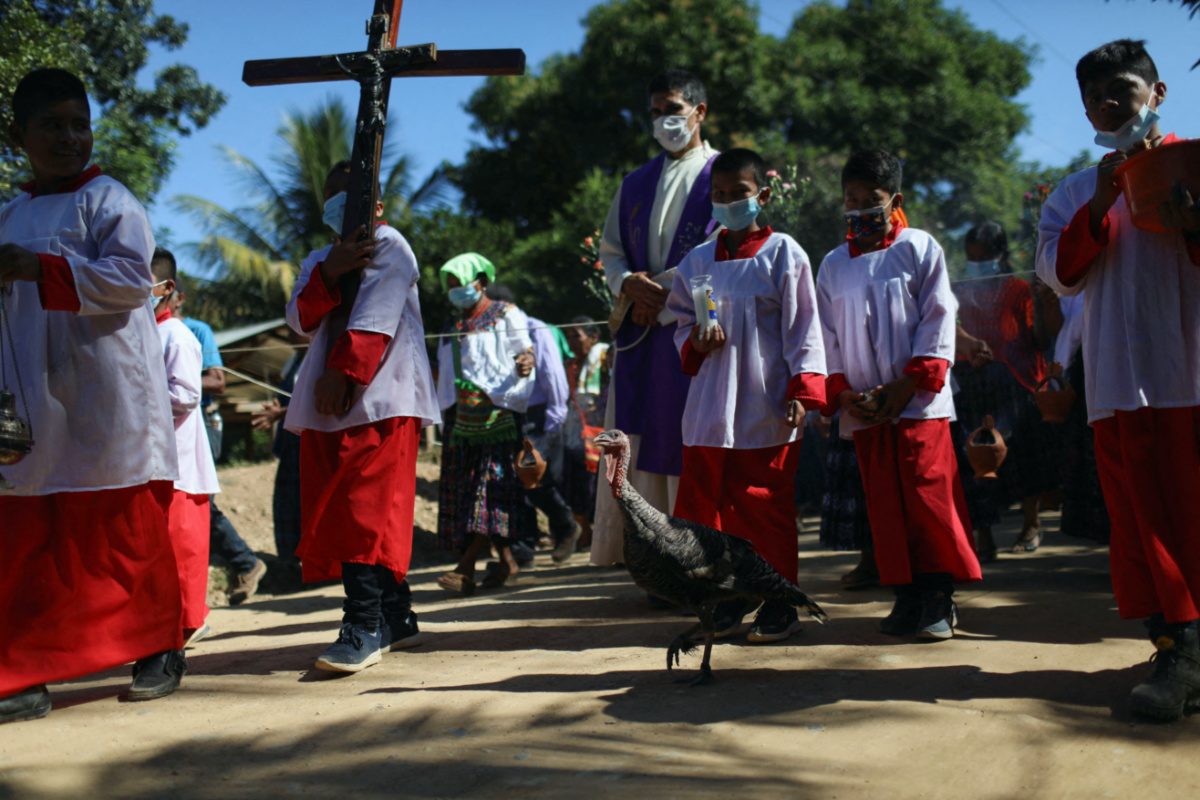Sepur Zargo, Guatemala
Reuters
Chanting prayers and laying down flowers over small wooden coffins, Indigenous Guatemalans honoured the remains of over 100 people killed decades ago in the country’s brutal civil war in a ceremony aimed at healing still-open wounds.
Mourners from the Maya q’eqchi community gathered in a small Catholic church in the Guatemalan hamlet of Sepur Zarco, about 200 kilometres north-east of the nation’s capital. Then they walked in a solemn procession, many hoisting the coffins above their heads, before placing them in a recently constructed mausoleum designed to keep their memories alive.

Altar boys participate in a procession of recently exhumed human remains dating back to Guatemala’s 36-year civil war from a church to an interment site, in Sepur Zarco, Guatemala, on 10th December. PICTURE: Reuters/Sandra Sebastian.
Only 21 of the 110 individual remains have been identified so far, according to the Forensic Anthropological Foundation of Guatemala, but all were almost certainly killed during the country’s over three-decade-long civil war ending in 1996. More DNA tests are scheduled for January.
Remains were recovered at old military bases in Sepur Zarco, Finca Tinajas and others in the Valle del Polochic, as well as the sites of camps where people took refuge.
During the civil war, almost a quarter million mostly Indigenous Maya were killed, while more than 40,000 others remain missing and unidentified, likely killed but their bodies never found.
“These bones represent the history, the suffering, the secrecy that prevailed all this time,” said Jose Suasnavar, the foundation’s associate director. “We are very grateful to the relatives who have trusted us with touching the bones.”
Amid sobs and quiet contemplation, a Catholic priest blessed the coffins with incense while several women did the same.
“For me, it’s so emotional to receive these remains,” said Mariano Mez, who is hoping to find those of his father. “Many of us are still waiting.”
The simple, whitewashed mausoleum is the final resting place for the victims, and serves as a memorial to the grandmothers of Sepur Zarco, Indigenous women who were kidnapped, forced into domestic slavery and suffered sexual abuse at an army camp in the 1980s.






